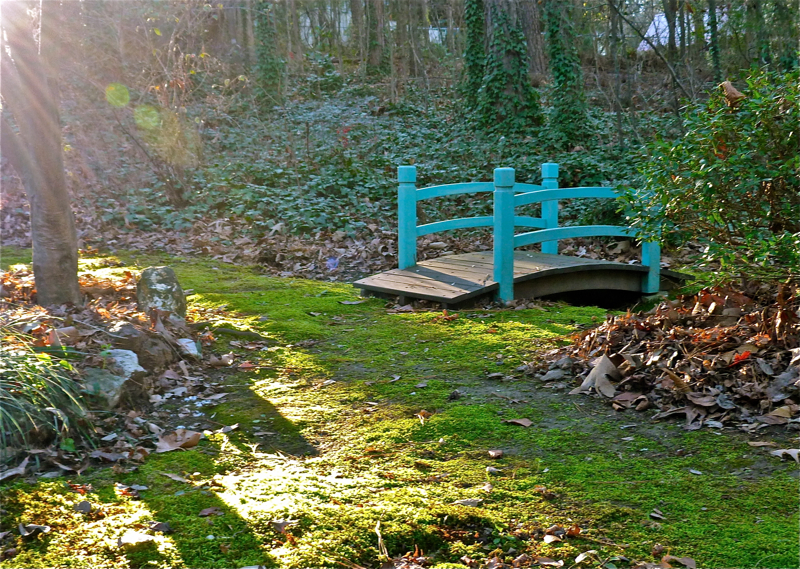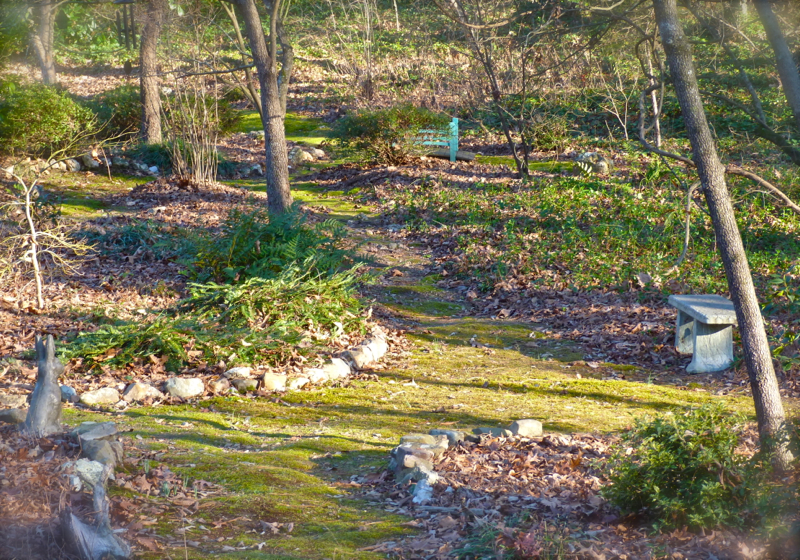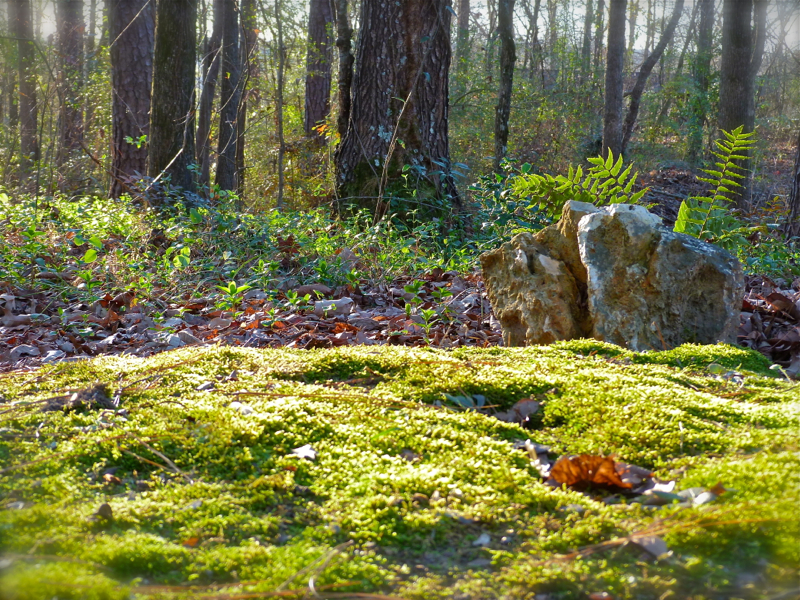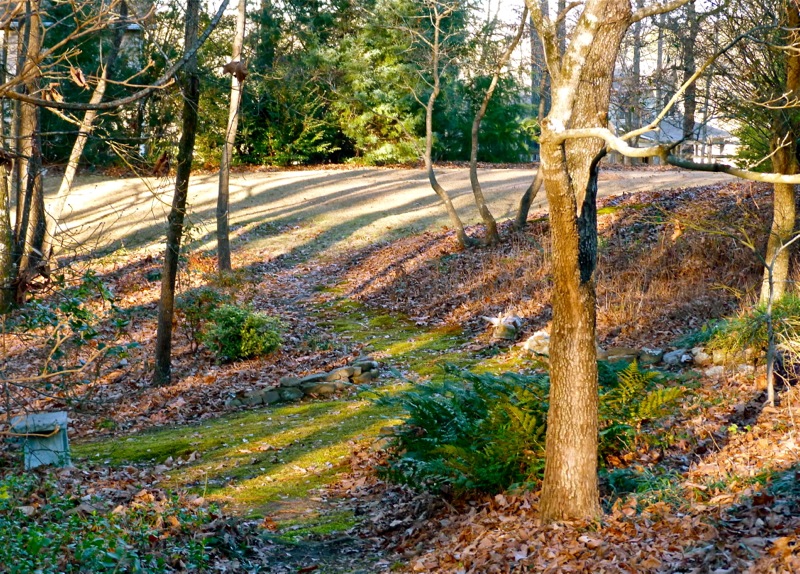The Best of the Rest, 2011
 Tuesday, January 10, 2012 at 8:00PM
Tuesday, January 10, 2012 at 8:00PM January is a good month for clearing out duplicate or subpar photos from my computer. It's a big job, as I can stroll through the garden and come back with several hundred photos! I eliminate a lot of them from my digital camera before transferring them to a computer, but I still end up with scads of photos just taking up hard drive space. However, there's always some photos I want to hang on to, even though they never made it to the blog.
Here are a few of the 'best of the rest'. For each month of 2011, I picked one previously unpublished photo taken that month. I chose them for different reasons, and the selection was harder than I thought!
January: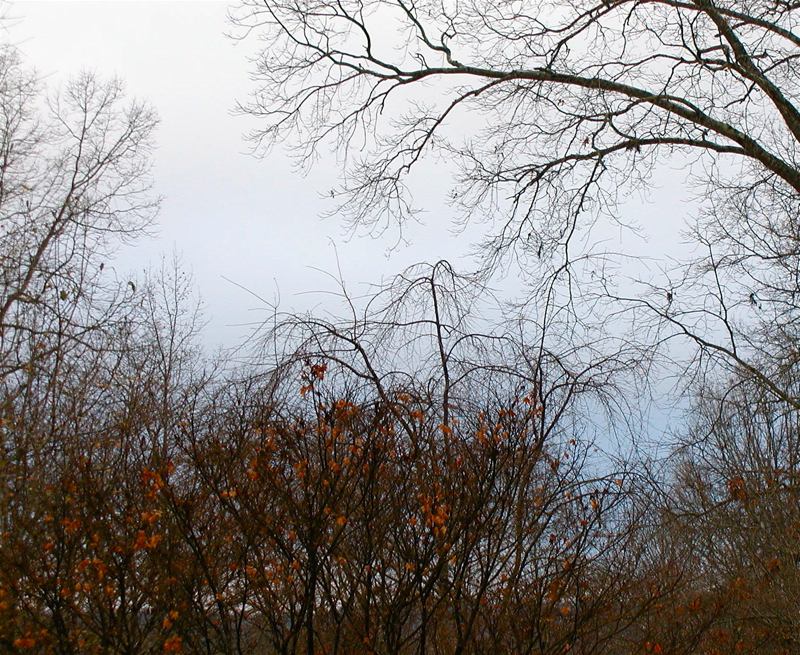 Naked trees are beautiful! January may be a dreary month, but even as a few dead leaves still cling to tree and shrub branches, I appreciate the sculptural quality of the landscape. It's a good month to see the 'bones' of the garden.
Naked trees are beautiful! January may be a dreary month, but even as a few dead leaves still cling to tree and shrub branches, I appreciate the sculptural quality of the landscape. It's a good month to see the 'bones' of the garden.
February: Snowfalls are few and brief here in Helena, Alabama. I enjoyed pretending this is the normal winter appearance of my yard! The blue bench in the Front Garden is beautiful whatever the season.
Snowfalls are few and brief here in Helena, Alabama. I enjoyed pretending this is the normal winter appearance of my yard! The blue bench in the Front Garden is beautiful whatever the season.
March: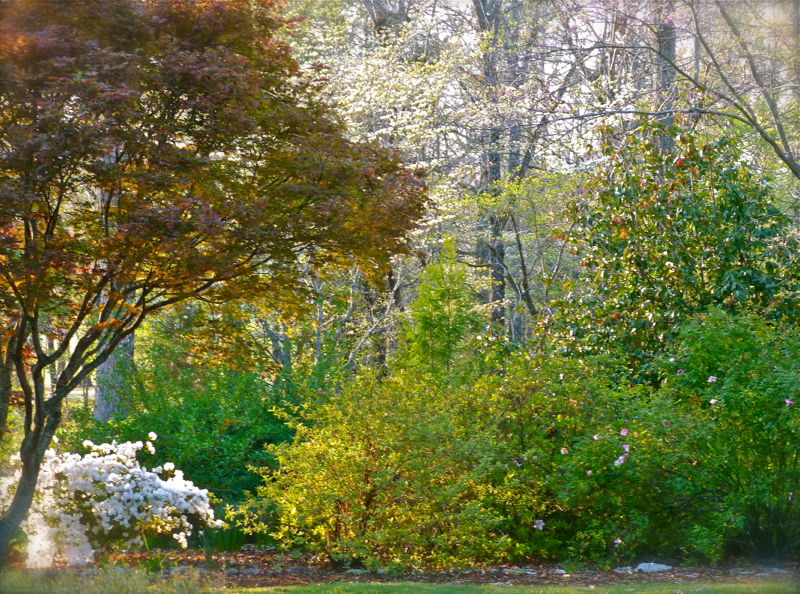 Only six weeks after the previous photo, dogwoods and some azaleas and other flowering shrubs are blooming. The Japanese maples also put on a show this time of year.
Only six weeks after the previous photo, dogwoods and some azaleas and other flowering shrubs are blooming. The Japanese maples also put on a show this time of year.
April: I have had this concrete squirrel ornament for many years. He moves around the patio and surrounding area according to whim.
I have had this concrete squirrel ornament for many years. He moves around the patio and surrounding area according to whim.
May: The swing in the Lady Garden is a favorite spot to watch and listen to wildlife. Hawks, owls, bluebirds, robins, cardinals, and many other species of birds frequent the area. Not to mention squirrels, chipmunks, and bunny rabbits. Occasionally there are raccoons and foxes, opossums, and snakes. And lots of insects!
The swing in the Lady Garden is a favorite spot to watch and listen to wildlife. Hawks, owls, bluebirds, robins, cardinals, and many other species of birds frequent the area. Not to mention squirrels, chipmunks, and bunny rabbits. Occasionally there are raccoons and foxes, opossums, and snakes. And lots of insects!
June: This year I added several hydrangeas to the ones already growing along the little path that connects the Lady Garden to the Front Garden. I now have a hydrangea walk!
This year I added several hydrangeas to the ones already growing along the little path that connects the Lady Garden to the Front Garden. I now have a hydrangea walk!
July: This 'Butterfly' Japanese maple was planted earlier this year. It grows near the hydrangea walk. I love its variegated leaves. I once had another one of these, unfortunately planted in poor soil in way too much sun. It was a deadly location. I hope this one will like its shady site with soil enriched with lots of organic matter. It's looking good in July, and so far, so good.
This 'Butterfly' Japanese maple was planted earlier this year. It grows near the hydrangea walk. I love its variegated leaves. I once had another one of these, unfortunately planted in poor soil in way too much sun. It was a deadly location. I hope this one will like its shady site with soil enriched with lots of organic matter. It's looking good in July, and so far, so good.
August: Many plants and people suffer through the summer doldrums in August, wilting in the heat. The bright foliage of weeping Deodar Cedar 'Feelin' Blue' is a refreshing, deceptively cool note in the Woodland Garden.
Many plants and people suffer through the summer doldrums in August, wilting in the heat. The bright foliage of weeping Deodar Cedar 'Feelin' Blue' is a refreshing, deceptively cool note in the Woodland Garden.
September: Look very closely amidst the garlic chives. Can you find two hairstreak butterflies?
Look very closely amidst the garlic chives. Can you find two hairstreak butterflies?
October: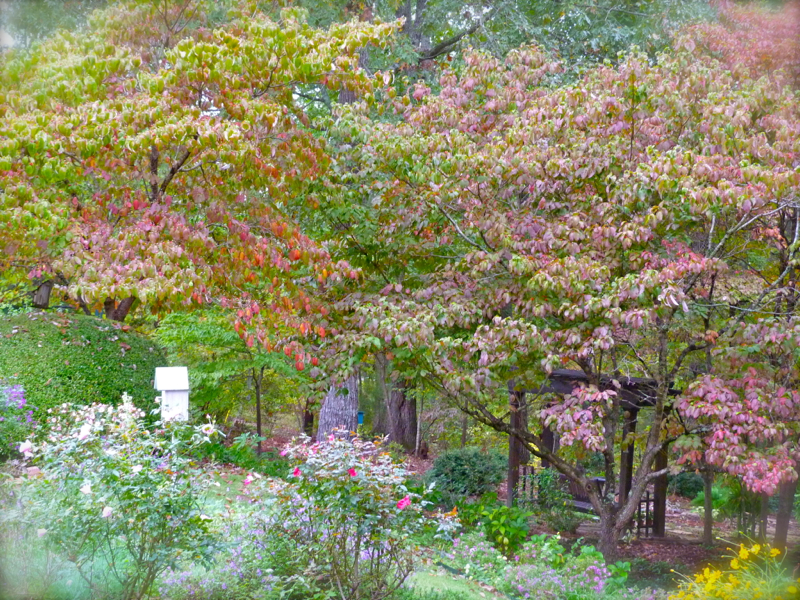 This October photo looks over the herb bed. One can see down the slope to the arbor in the Lady Garden. This area becomes wild if I don't trim and weed it regularly through the summer, which I never do because it's craziness to do that kind of work in July and August! I clean things up once the weather starts to cool. The herb bed is on my list for a major renovation. It's not at the top of the list, but it's on there.
This October photo looks over the herb bed. One can see down the slope to the arbor in the Lady Garden. This area becomes wild if I don't trim and weed it regularly through the summer, which I never do because it's craziness to do that kind of work in July and August! I clean things up once the weather starts to cool. The herb bed is on my list for a major renovation. It's not at the top of the list, but it's on there.
November: The ivy that grows in the woods beside our drive may be beautiful, but it is terribly invasive. Lou cuts the ivy from around the base of as many trees as possible each year, but it is a losing battle. The lady who built my house sixty years ago loved ivy and planted a few sprigs here and there. I wonder what she would think if she could see it now. I have to work to keep it out of the main part of the Woodland Garden.
The ivy that grows in the woods beside our drive may be beautiful, but it is terribly invasive. Lou cuts the ivy from around the base of as many trees as possible each year, but it is a losing battle. The lady who built my house sixty years ago loved ivy and planted a few sprigs here and there. I wonder what she would think if she could see it now. I have to work to keep it out of the main part of the Woodland Garden.
December: I love these variegated poinsettias. Each year many of my Christmas decorations are plants, and that is no surprise to anybody!
I love these variegated poinsettias. Each year many of my Christmas decorations are plants, and that is no surprise to anybody!
I hope you enjoyed seeing some of my leftover photos. May you have happy gardening and make many good memories in 2012!
If that's not enough, also see 2010 Leftovers
 Permalink
Permalink 

